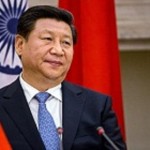With Indian Prime Minister Modi visiting China from 14-16 May, much remains on the agenda between the two Asian giants. International media will concentrate on border disputes, although these really have only been a relatively recent development following the Chinese takeover of Tibet – with which India shares a long border – in 1959. In the years prior to this, India’s regional border affairs were conducted with Lhasa, not Beijing. To be frank, the claims both have involve a historical third party, both Tibet pre-1959, and Pakistan. Communist China has thus far been firm in its stand over territorial claims that actually predate its own existence. Yet that anomaly aside, China may now appear rather more flexible in attempting to settle these differences than has previously been the case. The reason for this has everything to do with China’s own demographic developments.
Twenty-five years ago, coming out of the back end of the Cultural Revolution yet looking forward to a new dawn in China, the average age of a Chinese worker was 23. That worker age dividend continued – partly as a result of Chairman Mao’s earlier policy of allowing multiple offspring, which saw mothers being rewarded for having 6 or 7 children, in stark comparison to the one-child policy that followed hard on its heels.
China’s young working-age population swelled well into the 1990’s, when finally population growth began to slow. From then on, China’s working population has aged and is now reducing in total size – having reached a high point of 750 million. The impact of this aging, but increasingly wealthy Chinese population is the creation of a consumer class. The average age of a Chinese worker today is 37. But the quandary is this – as Chinese wages increase, where is the One Party State going to obtain cheap mass-produced goods to keep its own population happy?
Step forward India. Today, the average age of an Indian worker is 23 – the same as China 25 years ago. The current Indian workforce is also increasing – standing at some 450 million at present, it will reach numbers comparable to China in 2025. This means that just as China’s workforce is aging and becoming more expensive, India’s is becoming available in larger and cheaper numbers. The workshop of the world, purely when measured in terms of population dynamics, is shifting, and India will take up much of the strain.
This has very specific implications for China. With a massive, yet demanding middle class, the Chinese Communist Party needs a reliable source of cheap labor to continue to allow Chinese nationals to enjoy mass-produced daily products. While some of this production will be met by China, and some from other ASEAN nations (most notably Indonesia), only India has the mass labor force available to provide that additional manufacturing capacity. Vietnam, by comparison, is not the “new China”. It is simply too small in terms of being able to satisfy an increasingly hungry Chinese desire for consumables.
The Chinese Government have been quick to realize this, and have toned down rhetoric against India and along disputed border lines. The Chinese have offered to invest billions in upgrading Indian infrastructure, to ensure that those future cheaply made-in-India products can reach the Chinese domestic consumer market quickly and easily. This is expected to be underlined by upgrading trade ties, which include the potential for a China-India Free Trade Agreement in some form. Early stage discussions have already begun concerning this.
The crux of the matter is that the Chinese recognize that they need India’s emerging young workers to satisfy their own demand. In the new emerging Asia dynamic, the China-India trade space is set to become one of the most explosive over the coming decade. Understanding this dynamic and reaching out into India for access to workers on a massive scale will impact upon the Chinese supply chain for decades to come.
In short, China – and crucially the political aspirations of the Communist Party – now need India more than ever before. An inability to provide a massive new Chinese middle class with a sustainable supply of cheap, yet reliable goods would cost the CCP dear in terms of domestic social unrest. Chinese manufacturing is now in danger of becoming too expensive for much of its own citizenship. Indeed, such is the need for China to secure Indian manufacturing for this that it has openly offered to foot part of India’s own infrastructure development bill. Xi and Modi will almost certainly have development at the top of their lists and teams of analysts poring over documents to see where ancient trade routes can now be upgraded and brought back into the 21st century. Chinese investment into Indian hi-speed rail networks, investments into Port facilities are all likely to be announced. Yet while the infrastructure deals will garner the headlines, the fundamental driver between the two nations is this. The good news for the Indian politicians who are concerned about the China trade imbalance is that China needs India to export its manufacturing to China to satisfy future Chinese domestic demand. China’s President Xi can be expected to hand Indian Prime Minister Modi a shopping list.
Chris Devonshire is Founding Partner, Dezan Shira & Associates.
This article was exclusively written for Gateway House: Indian Council on Global Relations. You can read more exclusive content here.
For interview requests with the author, or for permission to republish, please contact outreach@gatewayhouse.in.
© Copyright 2015 Gateway House: Indian Council on Global Relations. All rights reserved. Any unauthorized copying or reproduction is strictly prohibited


